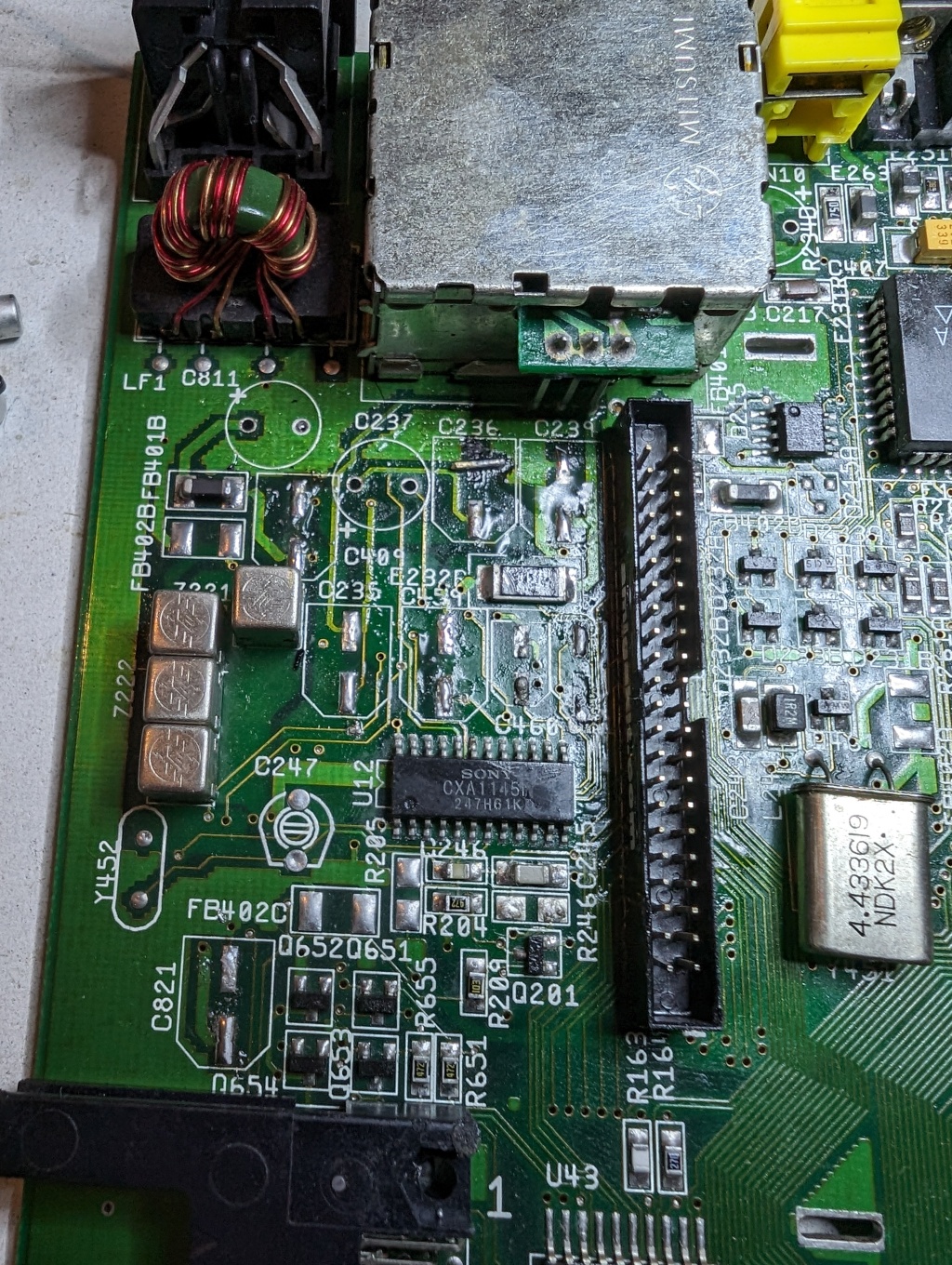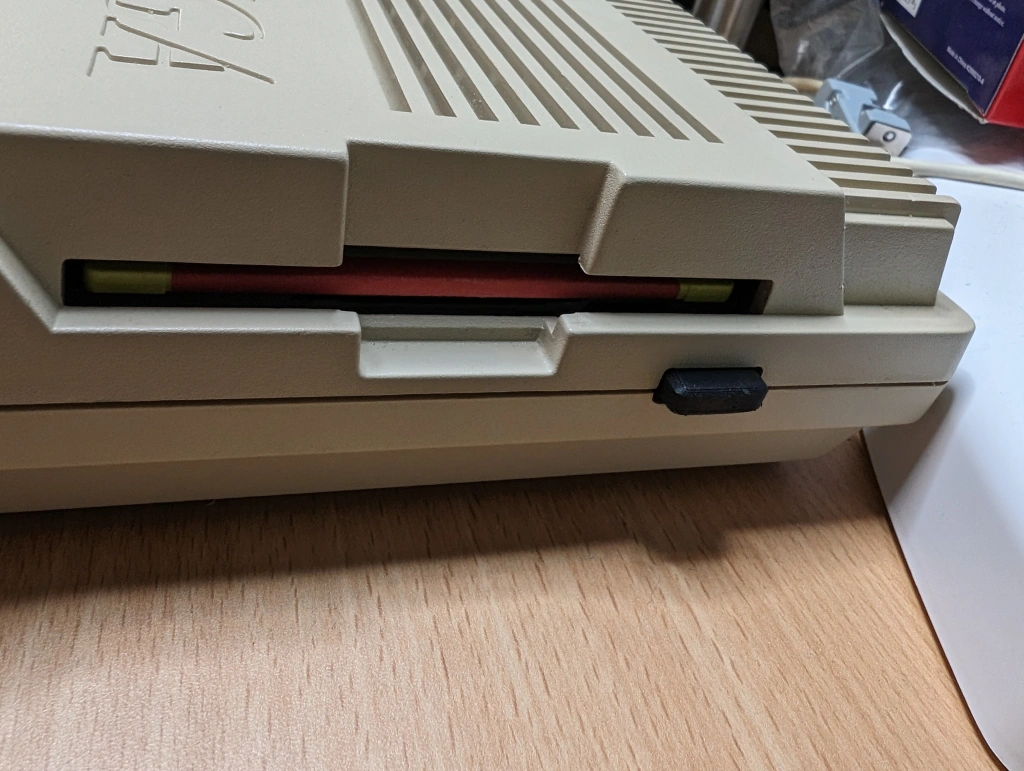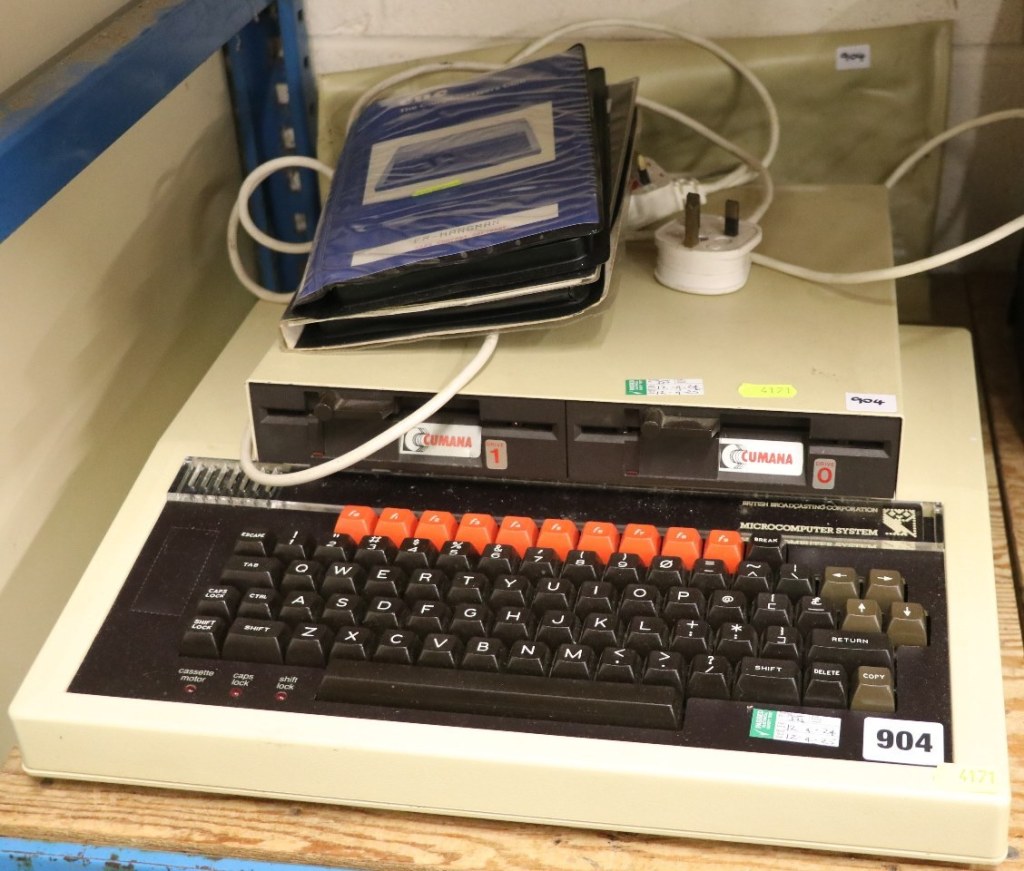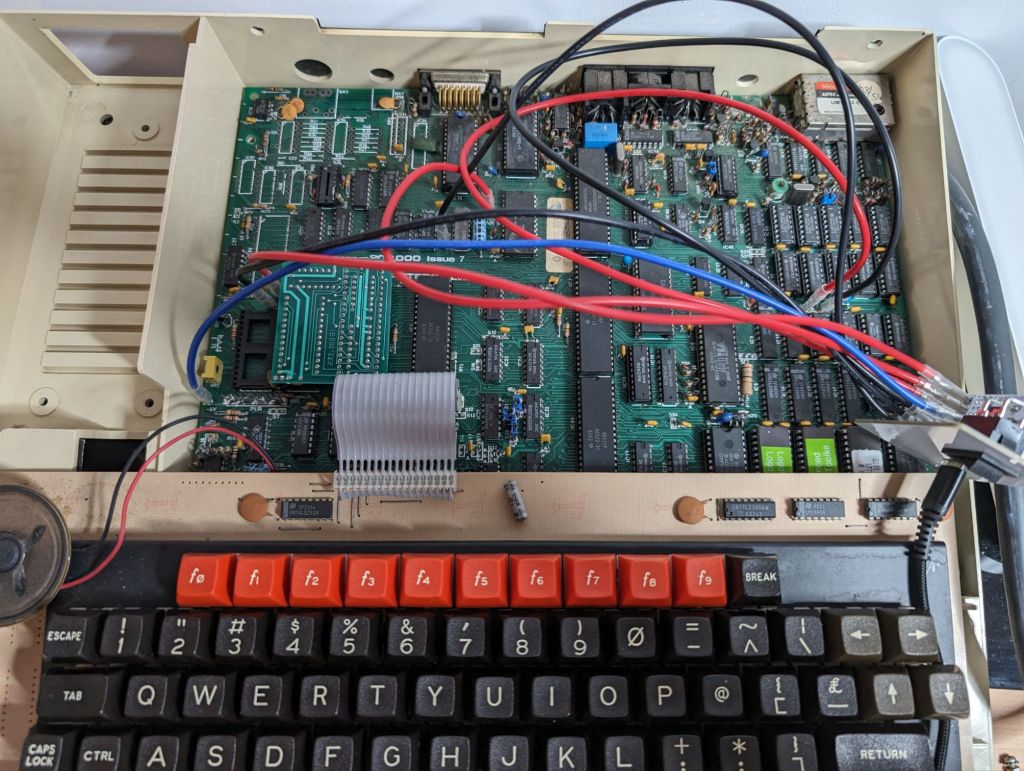A couple of years ago I acquired an Acorn A3010 which I restored in this blog. Along with the machine came an Acorn branded monitor (which I have donated) and an Acorn JP150 printer. Today I have finally turned my attention to this printer.
About the printer
The Acorn JP150 is actually a re-badged Olivetti JP150. It is what was called a “bubble jet” printer. This is a form of inkjet technology. Inkjets typically either use a piezo technology to push the ink out or a thermal technology to effectively boil and squirt the ink. The latter is what “bubble jet” meant.
This printer is in a very compact format for tucking away somewhere, but unfolds into a capable, one page-at-a-time, bubble jet printer.


Inspection
Looking around the machine is interesting. It has a bunch of settings to use internal fonts, which you can set using switches hidden under a flap. There was no cartridge in the printer, but a lot of crystallised gunk at the bottom and potentially even on the motherboard.



Opening up
The printer is only clipped together and was relatively easy to open up using standard plastic opening tools. The entire outside plastic shell comes off, a cable to the buttons and LEDs needs to be removed and then a single black clip holds the mechanism down. The mechanism has two flex cables and two motor cables connected. I marked one of them with a dot after these photos so that I could reconnect them in the correct order.


Underneath we can see the motherboard. It is effectively an 80188 PC in there. We can also see how bad the ink spill is. It looks like the board was manufactured in early 1993, this tallies with my A3010 being a later non-mezzanine version.

I actually took a closer picture of this and put a question on Twitter to see if anyone could identify the board and stain. I was surprised that someone got it!
Leakage cleaning
Whilst Isopropyl alcohol didn’t work to clean this up, acetone did. When mopped up it was black on the cleaning cloths, which tallies with it being printer ink. I also picked out the gunk from the bottom of the print head carriage. I presume this is a reservoir for cleaning and over the years of usage it filled and overflowed.


Whilst cleaning this piece of rubber fell out from somewhere. I haven’t found anywhere that it fits, so maybe someone dropped it inside?

There was a spring that had become unsprung too. I managed to bend a loop back onto this and reattach it.

Getting things running
At this point it powers up, but just flashes an LED, my guess is this is due to the missing cartridge.

There are a few things I’m going to need to get this running properly. The first is ink. Luckily the cartridge type was used in many printers and fax machines under the code FPJ20 or 84431. I managed to find one on Amazon that wasn’t very expensive. I also need a printer cable, but I have one of those spare.
I needed the driver disk for the Archimedes to print to this. This machine came with one, but support is also built into RISC OS 3 onwards, which is what my A3010 runs.

Finally, I figured I needed the manual, if there were to be any issues or error codes this thing is going to be very difficult to figure out without one.
I searched all over the internet and could not find a PDF of the manual for this or the printer under the Olivetti brand. But I did manage to find an original copy of the manual for sale on eBay, so I acquired that. Might not be in the best condition, but as long as I can read it, that is all that matters.

Cartridge Install
I installed a refurbished cartridge into the printer and powered it on, but it was still just doing the rapid flashing light issue.

I guessed that the contacts for the cartridge needed cleaning. I gave them a wipe with isopropyl alcohol, re-inserted the cartridge, powered back on and it seemed to do a proper initialisation sequence. On to testing!
Test print
I installed the driver on my Archimedes A3010 and tried to print the README for the printer driver. On the first attempt it loaded the paper and then just immediately hung, a few more tries and it continued to do this. I disassembled the printer again and found a little bit of ink around some IC pins that I had missed. I’m guessing the ink is slightly conductive.
I attempted this again, and it does attempt to print it:

Unfortunately the page is coming out blank. Which means either the signals aren’t all getting to the cartridge, or this cartridge is junk. To eliminate the latter, I ordered a new original cartridge from another supplier.
Another cartridge
This time after reading the manual I found out that holding down “Line Feed” whilst powering on the printer initiates a test print from the printer itself. This is the output with the new cartridge:


This means the original cartridge was bad. It also means that the new cartridge looks to be working! Next I attempted to connect it back to the A3010. This time I tried to print an image that came on the RISC OS floppy disks to see what would happen:


Looking good (for 1993 anyway). This thing works great now and it even works well on my retro PCs, probably the Amigas too, but I haven’t tried that yet.






Leave a comment